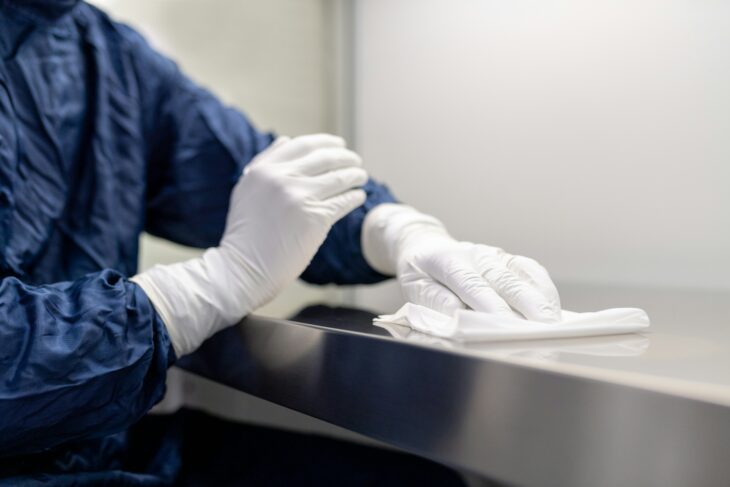Our world is dominated by single-celled, microscopic organisms that can survive in extreme and strange locations. These habitats include the human body, which houses about 1 microorganism for every human cell. While many of these microorganisms are neutral or even good for our health, some of them can make us very sick. Worse still, many of the dangerous microorganisms, called pathogens, can be passed from one person to another. This transmission can be a serious issue for hospitals where many sick people come together, bringing their pathogens with them.
In the mid-1840s, a doctor in Vienna by the name of Ignaz Semmelweis had the realization that by simply washing our hands, we could lower the spread of disease. This was the beginning of our understanding of sanitization in hospitals. Since then, scientists and doctors have learned to use many different chemicals to kill pathogens and keep patients safe. One of the most powerful sanitization chemicals is sodium hypochlorite, also known as bleach. This chemical kills microbes by breaking the outside of their cells and changing the chemistry of their insides. Because it is so effective, doctors have used bleach as a hospital disinfectant for nearly 200 years. But even though it is so deadly, it doesn’t kill all microorganisms.
To investigate how some microorganisms survive bleach treatment, a team of scientists at the University of Plymouth in the UK studied a pathogen called Clostridioides difficile. This microorganism causes diarrhea and is notoriously hard to kill. Clostridioides difficile produces durable mini-cells called spores that can be passed between patients through touch. These spores are a hibernating form of Clostridioides difficile with a tough outer shield. The spores quietly wait until they reach the human colon where they wake up and cause disease. Because these spores are so hard to kill, the scientists wanted to know how well normal hospital disinfection protocols work on them.
The scientists first grew Clostridioides difficile in the lab and collected their spores. They tried to kill these spores using bleach at normal strength, 5 times strength, and 10 times strength. They treated the spores with the different bleach mixtures for 10 minutes and checked how many survived. Even with bleach that was 10 times stronger than normal-strength hospital bleach, only 10% of the Clostridioides difficile spores died after treatment.
Next, the scientists wanted to know how well the spores could be transferred around the hospital on patient and surgical gowns. They lightly sprayed samples of 10 million spores onto fabric gowns and treated them with the 3 different bleach strengths. Then the scientists dabbed the fabric gowns onto agar plates used to grow Clostridioides difficile and counted how many of the spores survived and grew. Again, only 10% of the spores died from this treatment.
Lastly, the scientists wanted to see if bleach treatment was affecting the outer shield of the spores. The spores are only 1 micrometer long, or about 25,000 times smaller than an inch. Because these spores are too small to see with the naked eye, the scientists used a special electron microscope to get a clear view of them. This microscope uses a beam of high-powered electron particles to provide much better resolution than a standard light microscope. Using this instrument, the team compared the shape of the spores before and after bleach treatment. The scientists suspected that because the pathogen survived bleach treatment, the outer surface of the spore would likely be unaffected. This is exactly what they saw in the microscope images. The treated and untreated spores looked just like each other and showed no signs of breakdown from the bleach.
The scientists concluded that Clostridiodes difficile can use its durable spore form to survive bleach sanitization, which may be why its infections are so hard to stop from spreading. The team suggested that doctors counteract these spores by using different fabrics in hospital and surgical gowns to prevent spores from sticking to them. They also insisted that doctors pay strict attention to how they disinfect things. Finally, they suggested that future researchers focus on new ways to destroy these spores to prevent the spread of Clostridiodes difficile.


